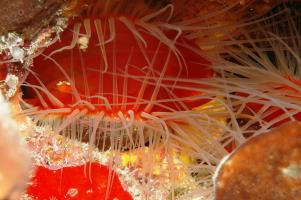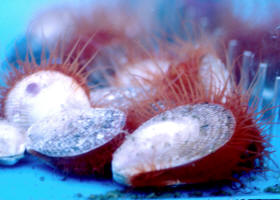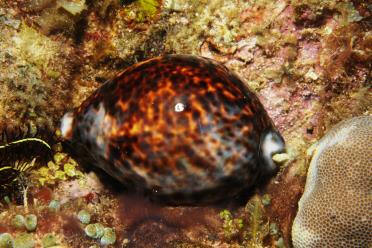|
Related FAQs: Cnidarians for Small
Volumes, Small
Marine Set-Up, Small Marine
Systems 2, Small
Marine Systems 3, Small Marine
Systems 4, Small Marine Systems
5, Small Marine Systems 6,
Small Marine Systems 7, Small Tanks, Small System Set-Ups 2, Small System Lighting, Small Marine System Lighting 2,
Small System Filtration,
Skimmers for Small Systems,
Small System Stocking,
Small Marine System Livestocking
2, Small Marine Stocking 4,
Small Marine Stocking 5, Small Marine Stocking 6, Small Marine Stocking 7, Small Marine Stocking 8, Small Marine Stocking 9, Small Marine Stocking 10, Small Marine Stocking 11, Small Marine Stocking 12, & Small System Maintenance, Maintaining Small Systems 2,
Maintaining Small Systems 3,
Maint. Sm. Sys. 4, Maint. Sm. Sys. 5, Maint. Sm. Sys. 6, Maint. Sm. Sys. 7, & Small System Disease,
Related Articles: Nano Reef Systems by Adam
Jackson, It's a Small World, Pico Tanks, By Kirby Adams,
Tom Walsh's Small
Reefs, Moving
Aquariums, Marine
Planning, Getting Started with a Marine Tank By
Adam Blundell, MS, Marine Biotope, Marine Landscaping, Fishwatcher's
Guides,
Series: Livestocking Small: Pico, Nano, Mini-Reef's....... Marine
Systems under 40 Gallons
Molluscs for Small Marine Systems
|

|
|
By Bob Fenner
|
|
 |
 |
 |
Small Marine Aquariums
Book 1:
Invertebrates, Algae
New
Print and
eBook on Amazon:
by Robert (Bob) Fenner |
Small Marine Aquariums
Book 2:
Fishes
New
Print and
eBook on Amazon:
by Robert (Bob) Fenner |
Small Marine Aquariums
Book 3:
Systems
New
Print and
eBook on Amazon:
by Robert (Bob) Fenner |
After small worms, crustaceans and even smaller groups of life,
the molluscs are the next most ubiquitous assemblage of life in the
world’s seas. Think about substrates… live and abiotic… sand, rock,
corals… where have you not seen snails and more. These “soft bodied”
(meaning of the word mollusk) animals do have their place in small
systems; as usual, in right/small numbers and the “right species”. There
are ones that are inappropriate due to size and temperament. Here we’ll
give a brief review of the better choices in species and how to sort out
the best specimens.
Bivalves: Including Not-So Giant Clams:
Most folks
don’t realize just how many small mollusk species there are, nor how
numerous they can be; mainly bivalves and gastropods (snails); a bunch
of these are interstitial fauna that are nearly microscopic. There are
places in the world where their biomass and empty shell et al. parts
constitute an appreciable percentage of the shallow substrate. For
aquarists, there are often unintentionally acquired molluscs that “come
in”, hitchhiking on and in live rock, live sand and/or with other
hard-bodied livestock. Most of these are innocuous, and even if large,
should they die (usually from lack of nutrition or some aspect of
varying water quality) their passing is of little consequence.
|
Paradise and Mollusc Found! Shown here is an
example of a common genus (Arca) with
more than 200 species found in tropical
seas (and a few temperate). A live and
dead A. ventricosa in Hawai’i. At
WetWebMedia.com we have had folks write
in with concerns that their “rocks were
moving”, having purchased a sizable clam
as part of their LR.
|
|

|

|
All but “the” Giant Clam, Tridacna gigas, have been
kept as smaller specimens in little marine aquariums successfully. As
with computer hard drives, displacement of motorcycle engines and bank
account balances, “the bigger/larger the better”; but smaller
individuals can be maintained for a period of time, even years, in tanks
of a few tens of gallons. There is a BUNCH to state regarding Tridacnid
selection in care; particularly in tinier tanks; but one fact I want to
make sure and state emphatically: Beware of trying too tiny specimens of
these animals! Two inch and less diameter shell width individuals have
far less chance of surviving the rigors of shipping and adapting. I
advise you to start with three plus inch across choices for any/all
species, but two that get too big.
|
Gigas as in Giga-watt? As in gi-gan-tic!
At right “the” giant clam Tridacna
gigas. Here at right a Four foot
long individual off of Cairns in
Australia’s GBR. Way too big!
Much
better (below) are Hippopus hippopus,
Tridacna crocea (at 15 cm., 6
inches across, the smallest giant clam),
T. maxima, and T. squamosa
|

|
|

|

|
|

|

|
|
T. derasa (right) really get too
large (Up to 24 inches across) too
quickly for small aquarium use.
|

|
Gastropods of Use: Limited Numbers:
As with Hermit Crabs, I am decidedly NOT a fan of
stocking/having too many snails… they just don’t “do enough” for me;
looks or function (cleaner upper) wise to warrant having more than a
few. Let me add a few negative facts here; snails in numbers are bad
because they can die en masse polluting your water, killing your
livestock; they can “cross the line” and consume encrusting et al.
“good” algae and more that you’d rather keep; they are vectors for many
parasites of fishes and other invertebrates. Okay, done.
IF you still wish to stock a few of the better “stomach footed Mollusca”
there are some better snail choices:
|
Here’s my take on the best of the
“clean up crew” snails on offer. Again,
the fewer the better in my opinion;
based on long experience. I would place
no more than a “couple per five
gallons”. At right a fave sand sifter,
(Super Tongan) Nassarius distortus.
Below: the Mexican Turbo Snail, Turbo
fluctuosa, a group of Trochus sp.,
some Nerite sp. , Cerithium
sp.,
|

|
|

|

|
|

|

|
Archaeogastropods: About Abalones & Limpets:
|
There are tropical Abalone (family
Haliotidae) species on the world’s
reefs, and these are occasionally sold
in the trade. Mmm, how to put this? They
don’t do much… will not come out, scour
your glass, remove blue green algae.
Actually, they’re smart; and only
consume leafy tasty algal species that
you’ll have to supply. What’s even
worse? The many times/places that you’ll
find cold water species like the Black (Haliotis
cracherodii) sold as a tropical.
Won’t live.
|

|
|
Are limpets a good idea? Oh yes;
of little notice and beneficial for
cleaning noisome diatom and
Dinoflagellates… If your system
spontaneously produces them, leave them
be. A nice batch down in Costa Rica’s
Pacific.
|

|
Cowries;
If You Can Get Them:
|
Okay! You’ve got me; I’m a
bonafide Cypraeid fan! Cowries are
gorgeous and functional! Especially
smaller species you can buy or if you’re
super-lucky get for free as live rock
hitchhikers. Am surprised that these
have not gained huge popularity with
marine hobbyists… as they’re abundant in
the wild, easy to collect, and very nice
for looks and more in small systems.
The snake-head cowry, Cyprea
caputserpentis at right. I’ve seen
money cowries offered for sale, but
there are many more.
|

|
Cephalopods; Squids, Cuttlefishes, Octopi: Not:
There are no “miniature” octopuses, or squids that are
suitable for forty or less gallon systems. This Class of Molluscs are
all too active, smart and “dirty eaters/mess makers” to do well in such
limited worlds. Go visit them at public aquariums, or even better,
if/when you can get out to do a bit of dive-adventure travel, and look
for them while out snorkeling, diving.
About Opisthobranchs & Small Systems:
Nudibranchs, Sea-, Side-Gill & Sap-Sucking Slugs are fab; but really
require their own specialized “for them and their host/food” set ups.
Don’t try mixing them with other livestock in little tanks.
|
I should mention Sea Hares… as
they are Molluscs, and Opisthobranchs
(“gills at the rear”); AND offered in
the trade from time to time (too often).
There actually are small, tropical
species that exist, but I’ve never seen
these offered to hobbyists. The ones
that are sold get way too large and die
way too easily; taking most everybody
else with them in a slimy mess. Oh, as
James Lawrence would say; “a statement
w/o an example is hollow. So, please see
my pic of an Aplysia sp. at right; being
offered in a LFS, retail store. To a
foot plus in length. Yes; even cool to
coldwater species are sold as tropicals
at times. Skip the whole group.
|

|
Chitons & More: A Brief Mention
These dorso-ventrally flattened, multi-plated shelled molluscs show up
quite often as hitchhikers hidden on better quality live rock. They are
harmless and a delight, moving slowly about your system, slowly rasping
small soft algae from rock. Enjoy them if they show up.

Popular/Offered Molluscs to
Avoid:
We’ll mention just a few groups here; the Pen Shells called Flame
Scallops and some of the cold water snails mis-sold as tropicals at
times, and the several conchs, whelks, helmet shells, duns….
|
Flame scallops, flaming out. Oh
how I wish a few of the more commonly
offered species sold in our interest
would be taken off the market. A key
example are the Pen Shells (Family
Limidae) genera Lima and Limaria mostly,
sold as flame scallops. These rarely
live for any period of time (days,
weeks) in captivity; starving from want
of suitable foods, being placed in
unsuitable settings. Avoid them. Shown;
the most common species in the trade
Lima scabra; here in the wild on a
reef in the Bahamas, and languishing in
a wholesaler’s sterile holding tanks.
|
|

|

|
|
Some examples of cool to cold
water molluscs that you may well see
offered for sale; that are NOT tropical.
At right, the California or Chestnut
Cowry; Cypraea spadicea; this one
laying ribbons of eggs. Other notable
chiller-needing snails sold include
Bubbles (Bulla sp.), Olives (Oliveta
biplicata) and Moons (Polinices
et al. sp.). Unless you have a chiller,
chilled system (room temperature won’t
do) look for real tropical species in
their stead.
|

|
|
“And a one, and a two”; ah not the
Lawrence W(h)elk! The bigger conchs,
cowries spider shells… all are too
rambunctious, messy eaters, renovating
specialists for small systems. Stick
with smaller species; yes; even IF the
large ones are on offer as small
specimens. The too-often offered/sold
Tiger Cowry (Cypraea tigris). Not a good
choice for even large systems. Largest
member of the family; should be left in
the sea.
|

|
Mollusc Specimen Selection Period:
A good mollusk is easy to find! With just a few criteria to consider,
you too can be a long-term keeper. What to look and look-out for:
1)
Time on hand; don’t buy just arrived specimens… Most deaths of
these animals occur well, on arrival; but the second time slot for
incidental mortality is the next twenty four hours. And the one after
that? The next day… Leave newbies at your dealers for days before
picking.
2)
Stinky? Not you; the tank. Dead and dying snails really smell bad…
give the system a whiff, and if it reeks, give the purchase a pass.
3)
On that same issue; IS the one, are the ones you’re looking at
“very” alive? Am reminded of Max in the “Princess Bride”, Billy
Crystal’s character stating “So much you know, he’s only mostly dead”.
You want molluscs that are mostly alive. Look for ones that are moving,
feeding… leave the ones having private parties in the corner.
4)
Lastly; look for empty shells… a bad sign. Unless you’re shopping
for new homes for hermits, you want to avoid tanks that have lots of
evidence of neglect.
Cloze:
Ah yes; “a chicken for every pot”, and some, but not all (by a long
shot) mollusk for every tank; even very small volumes. Take your time in
sorting out what’s available in the mollusk department; some species,
source countries are far better for our smaller systems; diverse others,
though get way too large, too disruptive, and too eager eaters for our
intended uses. Use your references to make a desired list to show your
stockist, and adhere to a moderate number of these animals.

